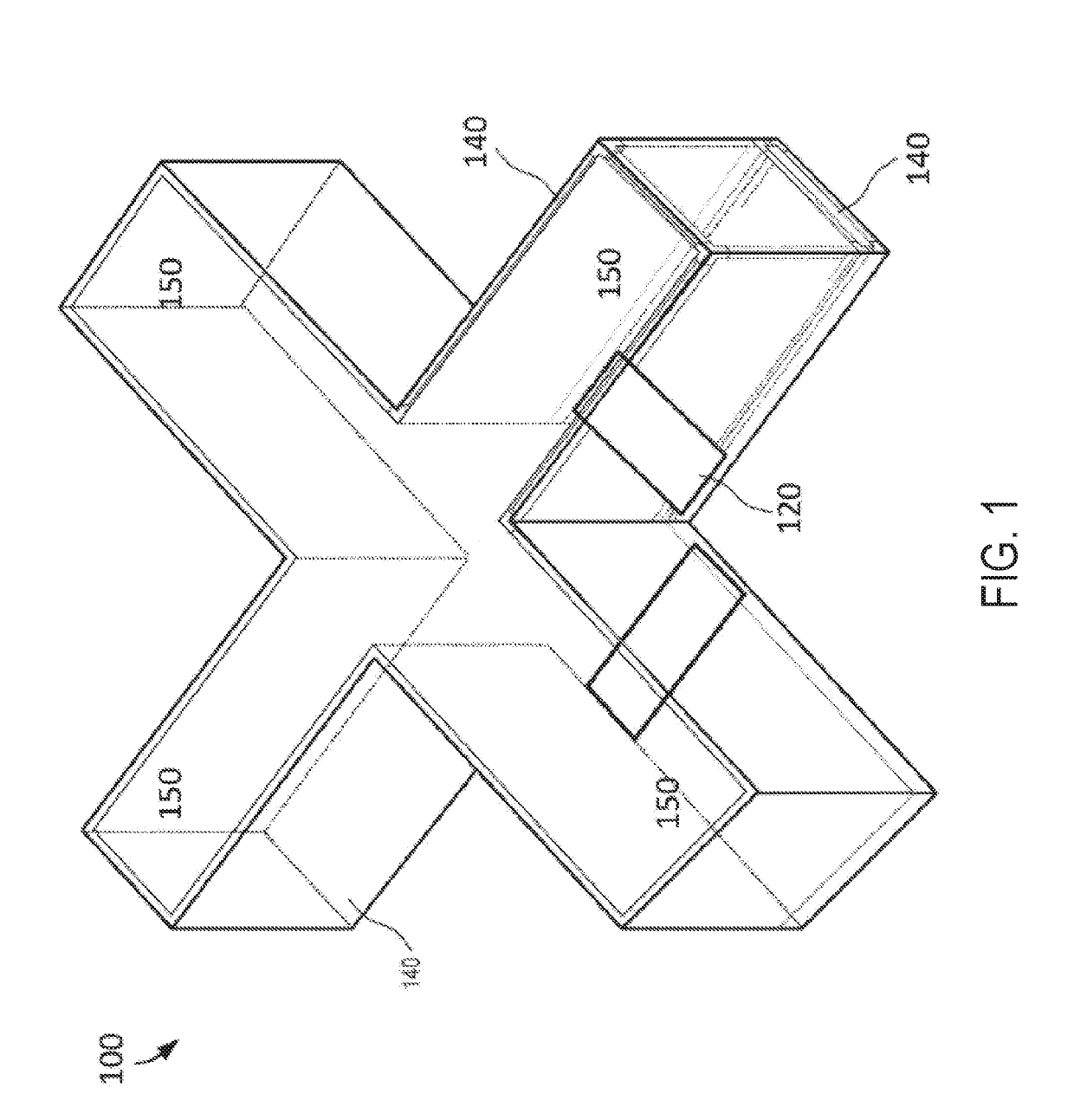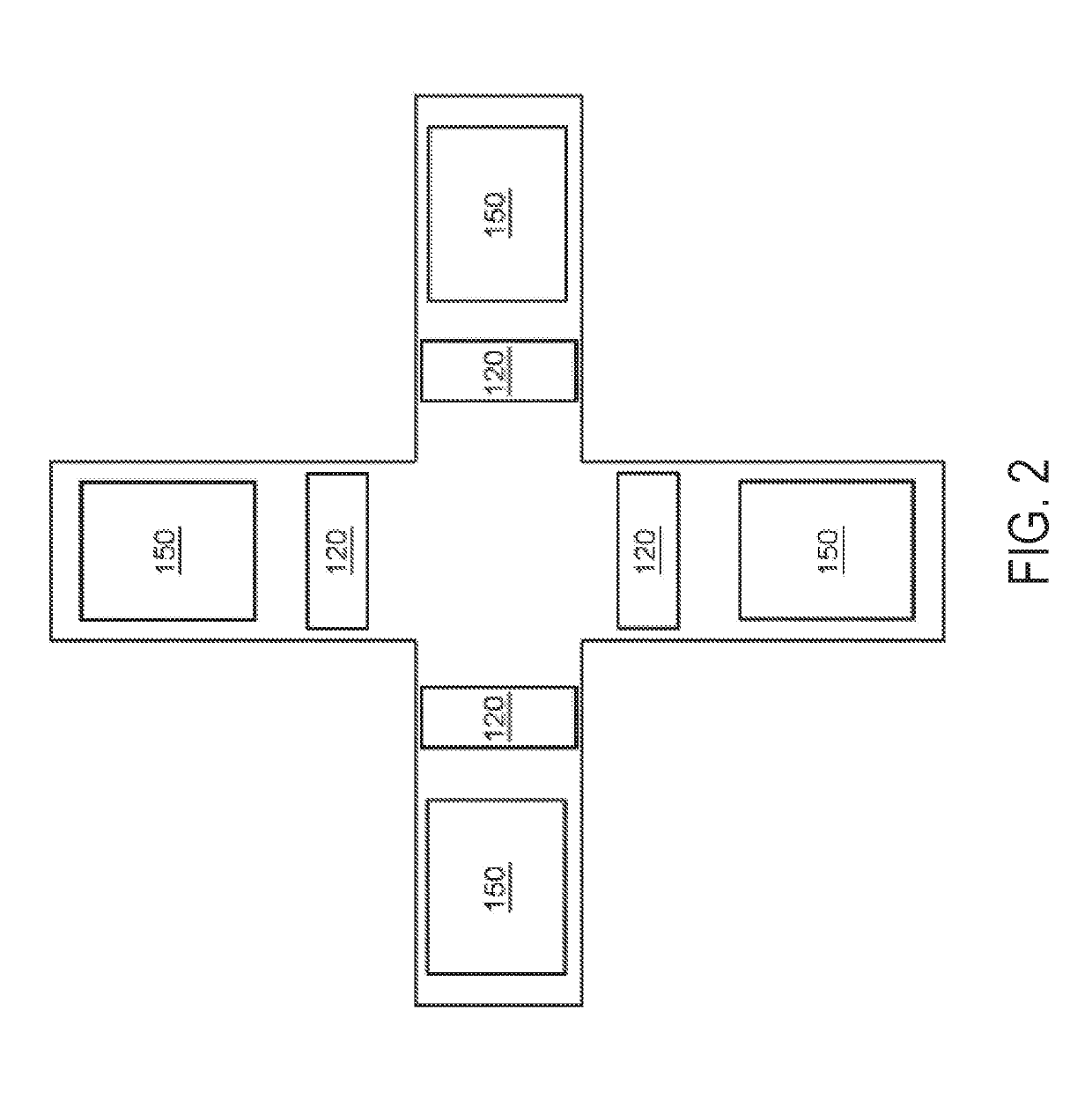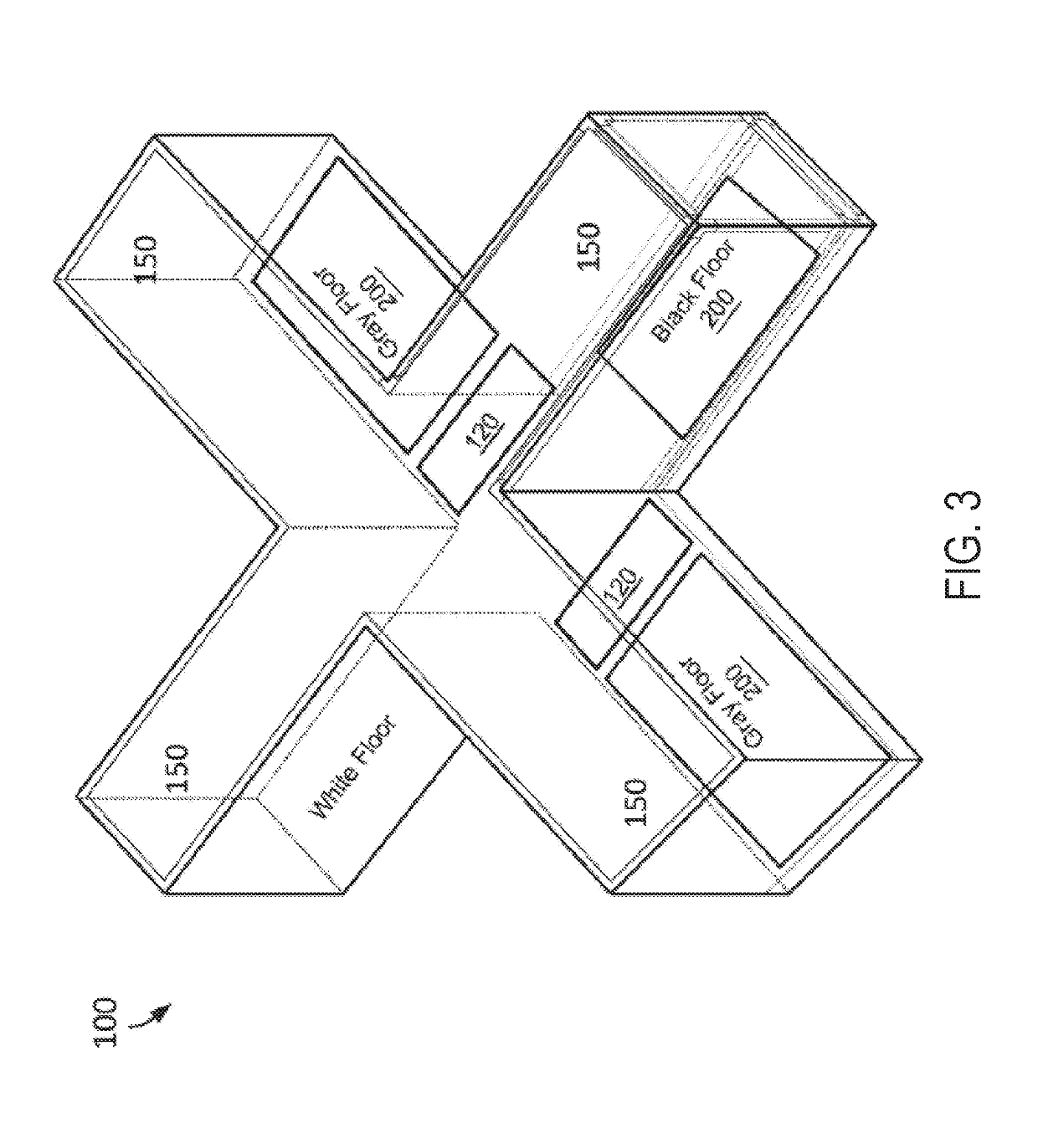Visual stimuli maze test for detecting visual abnormalities in prodromal alzheimer's disease and in alzheimer's disease
a technology of visual stimuli and maze test, which is applied in the field of maze test for detecting visual abnormalities in prodromal alzheimer's disease and alzheimer's disease, can solve the problems of inability to diagnose, limited brain function, and inability to detect pathological hallmarks, and no visual test currently exists to detect those functional changes
- Summary
- Abstract
- Description
- Claims
- Application Information
AI Technical Summary
Benefits of technology
Problems solved by technology
Method used
Image
Examples
embodiment 1
[0023]A maze for evaluating a rodent, the maze comprising:
[0024]a first room;
[0025]a second room, wherein the first and second room comprise floors and walls configured to allow a rodent to traverse between the rooms;
[0026]a negative stimulus deliverer in the first room;
[0027]a first visual marker in the first room and a second visual marker in the second room, wherein the first visual marker is different than the second visual marker; and
[0028]a control system to power the negative stimulus deliverer.
embodiment 2
[0029]The maze of embodiment 1, wherein the first and second visual markers are light sources.
embodiment 3
[0030]The maze of embodiment 2, wherein the first and second visual markers are LEDs.
PUM
 Login to View More
Login to View More Abstract
Description
Claims
Application Information
 Login to View More
Login to View More - R&D
- Intellectual Property
- Life Sciences
- Materials
- Tech Scout
- Unparalleled Data Quality
- Higher Quality Content
- 60% Fewer Hallucinations
Browse by: Latest US Patents, China's latest patents, Technical Efficacy Thesaurus, Application Domain, Technology Topic, Popular Technical Reports.
© 2025 PatSnap. All rights reserved.Legal|Privacy policy|Modern Slavery Act Transparency Statement|Sitemap|About US| Contact US: help@patsnap.com



